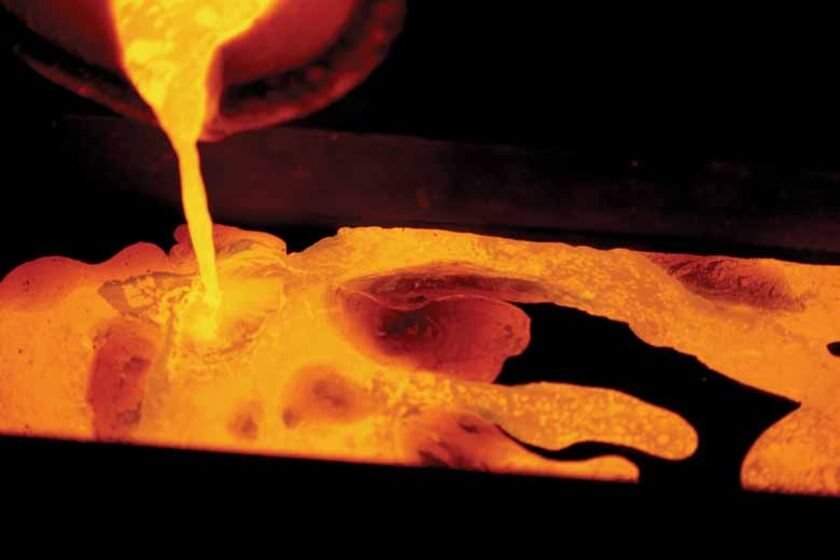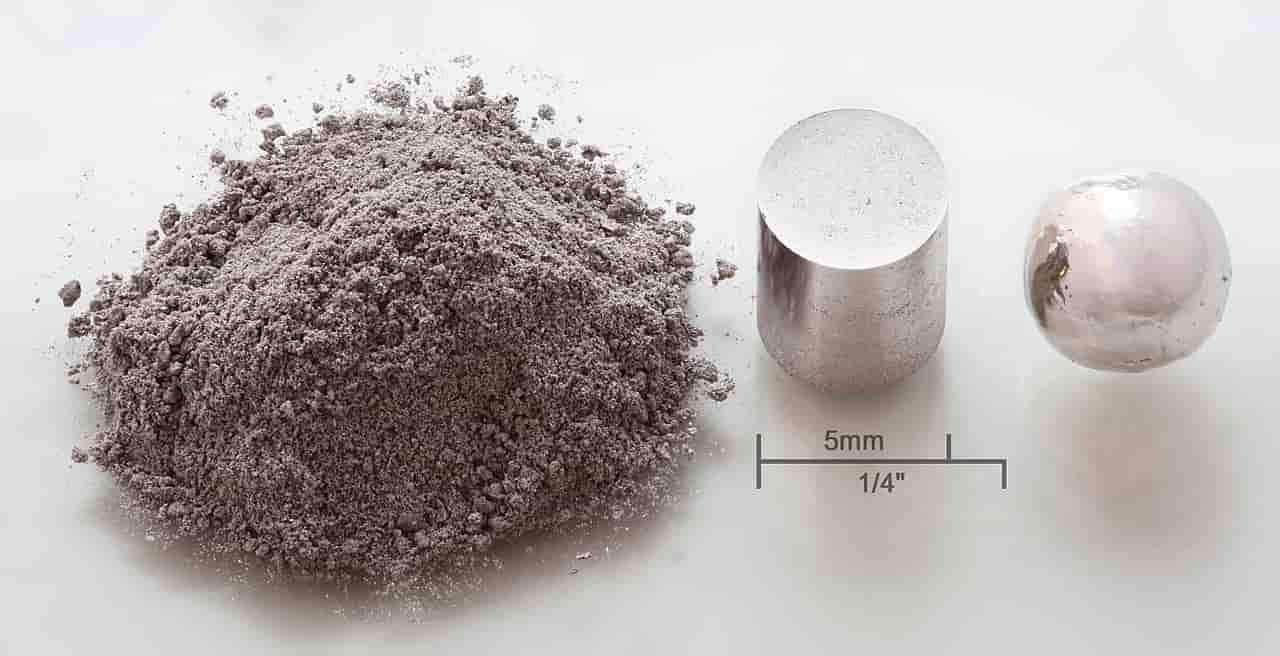Chemistry Branches
Chemistry, the study of the fundamental units of matter, is subdivided into branches which deal with specialized spheres of the subject. What are the different chemistry branches? Read on to find out.
5 Main Chemistry Branches:
- Analytical chemistry
- Biochemistry
- Organic chemistry
- Inorganic chemistry
- Physical chemistry
Although there are many branches of chemistry, the main five are biochemistry, physical, organic, inorganic, and analytical chemistry. While physical chemistry deals with the physical properties and characteristics of chemical substances, biochemistry involves the study of chemical processes that occur in living organisms. Organic chemistry can include the study of properties and structures associated with carbon-based compounds.
The sub-discipline of inorganic chemistry is the study of all compounds that are not carbon or hydrocarbon based. An inorganic chemist can study different metals, salts, oxides, and acids. Analytical chemistry deals with the analysis of the chemical constituents of substances. This branch is divided into two sub-areas of quantitative and qualitative analysis.
Some other branches of chemistry are geochemistry, environmental chemistry, electrochemistry, thermochemistry, and solid state chemistry.
Read also: Chemistry Studies and Branches (Fields of Chemistry)
Analytical chemistry
Analytical chemistry is the branch of chemistry that consists of the analysis of samples of various substances to determine their chemical composition; as well as the study of techniques to analyze and study the data (chemometrics). There are two main types of chemical analysis:
Qualitative analysis, which aims to establish the presence or absence of a certain element or chemical compound in the sample above a certain level.
Quantitative analysis, which aims to measure the exact amount or proportion of a given element or chemical compound in the sample. This is the most common type of analysis in modern analytical chemistry.
In a more straightforward way, it can be said that Analytical Chemistry is the art and science of determining what matter is and how much there is.
In analytical chemistry, special care must be taken in the collection and treatment of samples, and the use of appropriate statistical tools in order to obtain maximum precision and accuracy of measurements.
The physical-chemical techniques used are very varied. The most common today are based on spectroscopy. There are also classic techniques such as gravimetry and volumetrics , techniques based on electrical measurements either of potential (potentiometry), the current (amperometry) or the relationship between the two (voltammetry).
Biochemistry
Biochemistry is the science that studies the chemical reactions and interactions produced in living organisms, including the study and structure of proteins, carbohydrates, lipids, nucleic acids and other molecules present in cells. The etymology of the word biochemistry comes from the Greek βίος, bios, ‘life’ and chemistry. This one from the Low Latin chimia, from the Arabic kīmiyã´, ‘philosopher’s stone, and this one, probably from the Greek khimia ‘mixture of juices.
The survival of living beings depends on their ability to carry out a series of chemical reactions aimed at the exchange of matter and energy with the environment and the manufacture of their vital structures. Biochemistry studies, therefore, all those reactions that take place both inside the cell and in the internal environment of multicellular organisms. These bioreactions do not differ essentially from the typical reactions of organic chemistry, although they are specifically characterized by the fact that they all take place at relatively low temperatures (generally below 45 °C) thanks to the help of biocatalysts, called enzymes, and due to the fact that they function coupled to each other in a very complex network of interrelationships, which constitutes metabolism . Metabolism consists of degrading reactions (catabolism), which provide the matter and energy necessary for the organism, and biosynthetic reactions (anabolism), which use matter and energy for the construction of macromolecules and other complex structures of the organism. Biochemistry is a science born from the convergence and crossing of organic chemistry and physiology, two highly developed sciences throughout the 19th century, which have experienced very important progress during the last fifty years.
Because all life forms today descend from the same common ancestor, they have generally similar biochemistry. Whether alternative biochemistries are possible or practical is unknown.
Fields of research
Currently, biochemistry has four main lines of study:
Structural biochemistry focuses on the structure of increasingly complex compounds and molecular aggregates, in order to understand their mechanism of action and be able to design specific drugs to modify their action in cases of dysfunction;
The regulation of metabolism aims at the global and integrated study of metabolism, its regulation and its adaptation to different physiological situations, analyzing the control of enzyme activity (especially with regard to the variation of activity with relation to the degree of phosphorylation and the expression of genes that code for enzymes) and the mechanism of action of hormones (molecular endocrinology);
Cellular biochemistry studies, on a molecular scale, the different processes that allow the survival of the cell, which until now had been limited to the mechanisms of obtaining and utilizing matter and energy and currently extend to all cellular events, such as the cell division cycle or cell death; finally,
Clinical biochemistry involves the study of the molecular bases that lead to pathological situations.
*Relationship to other “molecular-scale” biological sciences
Researchers in biochemistry use specific techniques native to biochemistry, but increasingly combine these with techniques and ideas developed in the fields of genetics, molecular biology, and biophysics. There is not a defined line between these disciplines. Biochemistry studies the chemistry required for biological activity of molecules, molecular biology studies their biological activity, genetics studies their heredity, which happens to be carried by their genome. This is shown in the following schematic that depicts one possible view of the relationships between the fields:
Biochemistry is the study of the chemical substances and vital processes occurring in live organisms. Biochemists focus heavily on the role, function, and structure of biomolecules. The study of the chemistry behind biological processes and the synthesis of biologically active molecules are applications of biochemistry. Biochemistry studies life at the atomic and molecular level.
Genetics is the study of the effect of genetic differences in organisms. This can often be inferred by the absence of a normal component (e.g. one gene). The study of “mutants” – organisms that lack one or more functional components with respect to the so-called “wild type” or normal phenotype. Genetic interactions (epistasis) can often confound simple interpretations of such “knockout” studies.
Molecular biology is the study of molecular underpinnings of the biological phenomena, focusing on molecular synthesis, modification, mechanisms and interactions. The central dogma of molecular biology, where genetic material is transcribed into RNA and then translated into protein, despite being oversimplified, still provides a good starting point for understanding the field. This concept has been revised in light of emerging novel roles for RNA.
Chemical biology seeks to develop new tools based on small molecules that allow minimal perturbation of biological systems while providing detailed information about their function. Further, chemical biology employs biological systems to create non-natural hybrids between biomolecules and synthetic devices (for example emptied viral capsids that can deliver gene therapy or drug molecules).
Organic chemistry
Organic chemistry or carbon chemistry is a subdiscipline within chemistry that deals with the scientific study of the structure, properties, composition, reactions, and preparation (by organic synthesis or by other means) of compounds based on carbon, hydrocarbons and their derivatives. The fundamental purpose of organic chemistry is also to explain the structure of molecules (structural analysis), the study of special properties and general relationships between compounds, reaction mechanisms and stereochemistry.
Organic compounds may contain other elements, including hydrogen, nitrogen, oxygen, halogens (fluorine, chlorine, bromine, iodine) as well as boron, silicon, phosphorus, sulfur; less often, lithium, sodium, magnesium, copper, titanium, potassium, iron, cobalt, zinc and lead. The latter chemistry is called organometallic.
Organic compounds are structurally diverse. The range of applications of organic compounds is very large. They form the basis of (or are an important constituent of) many products, including plastics, pharmaceuticals, petrochemicals, food, explosives, and paints. They form the basis of all life processes on Earth (which are based on carbon) with few exceptions.
Inorganic chemistry
Inorganic chemistry is the branch of chemistry that studies the behavior of inorganic compounds, i.e. compounds that do not contain carbon (as opposed to organic compounds that contain carbon). In fact, the difference between organic and inorganic compounds is diffuse and quite arbitrary: on the one hand, there are compounds with carbon that are considered inorganic, such as carbides, carbonates, graphite or diamonds; on the other hand, many compounds which are formed essentially by carbon atoms also contain transition metals. Traditionally studied by inorganic chemistry, these compounds are studied by organometallic chemistry, an overlapping discipline between the two branches.
The fields of study in inorganic chemistry are organometallic chemistry, aggregate chemistry and bioinorganic chemistry.
Physical chemistry
Physical chemistry is a branch of chemistry that studies chemical concepts from a physical point of view. The study of the behavior and properties of chemical systems from the perspective of physics can be approached both on a macroscopic scale and on a microscopic scale, in the latter case at the molecular level.
In this type of chemistry, we use the different methods used by physics to study the structure and properties of matter. In this subdiscipline, the subject is studied based on the physical principles that govern the behavior of atoms, molecules, and other chemical systems.
Chemical physics is a branch where there is a combination of several disciplines, such as thermodynamics, electrochemistry and quantum mechanics where mathematical functions can represent interpretations at the molecular level and at the atomic level. Changes in temperature, pressure, volume, heat and work in solid, liquid and/or gas systems are also related to the interpretation of these molecular interactions.
Modern physical chemistry has a solid foundation in pure physics. Areas of great importance in this regard include thermochemistry (chemical thermodynamics), chemical kinetics, quantum chemistry, statistical mechanics, electrochemistry, liquid state chemistry, colloidal chemistry, surface chemistry and spectroscopy. Physical chemistry is a fundamental part of the study of materials science.
Other Chemistry Branches
Astrochemistry
This branch studies the chemical composition of celestial bodies such as stars, planets, comets, as well as the matter of interstellar space.
Astrochemists apply the techniques of radio astronomy and spectroscopy to perform various analyzes of interstellar matter, galaxies and stars.
Electrochemistry
This sub-discipline is responsible for studying reactions producing electrical effects, in relation to chemical reactions. That is, the correlation between these chemical reactions and the transformations of chemical energy into electrical energy and vice versa.
Photochemistry
This type of chemistry is responsible for analyzing both phenomena as the interactions between molecules and atoms, as well as their interaction with light and electromagnetic radiation.
In this category there are also various applications such as the creation of substances that produce the absorption of certain electromagnetic wavelengths. For the photochemical phenomenon to occur, it is necessary to receive the light energy and the chemical reaction.
Geochemistry
It is a specialty of the branches of nature, responsible for the study of the chemical properties of the different minerals of the earth. It is based on both geology and chemistry to study the structure and assets of the chemical components existing on the earth.
Nanochemistry
This category includes all activities related to nanosciences and nanotechnologies. These fields have in common the use of traditional chemistry tools for the creation, development and study of objects of nanoscopic dimensions.
This discipline is responsible for studying the unique characteristics of sets of molecules or atoms to be applied to possible fields such as medicine.
Neurochemistry
It’s basically the chemistry of how the brain works. It is the branch that is based on the study of the interactions of chemical substances in the brain, such as serotonin, melatonin, hormones and neurotransmitters, as well as psychotropic drugs and other substances, and their effects on the brain.
Industrial chemistry
In this branch, knowledge of chemicals is applied to the production of materials and chemicals with minimal impact on the environment. In this area, the processes used in the industrial sector for the transformation of matter are studied.
Four processes are involved in industrial chemistry: heat transfer, momentum transfer, mass transfer and chemical change.
Pharmaceutical chemistry
This type of chemistry is responsible for both the research and production of drugs to combat medical-psychiatric conditions. This subcategory belongs to two other categories: applied chemistry and industrial chemistry.
It basically includes the study, analysis, research and tuning of organic and inorganic compounds, in this case for use in the field of medicine.
Petrochemicals
It is a sub-branch of two types of chemistry: organic and industrial. It is the science that is responsible for the study and transformation of substances from hydrocarbons such as oil and natural gas, this to transform them into fuels and other chemicals useful for humans such as plastic and polymers.
This type of chemistry also aims to provide knowledge and mechanisms to extract chemical substances from fossil fuels. On the other hand, this branch also allows the production of products such as pesticides, herbicides and fertilizers, as well as the production of asphalt and synthetic fibers.
Nuclear chemistry
This branch of chemistry studies the changes that occur in the nucleus of an atom, either naturally or artificially. But it is also responsible for analyzing the chemical reactions of radioactive substances such as radon, uranium, radium and actinides.
For the application of nuclear chemistry, special equipment must be used, as is the case with known nuclear reactors. It is thanks to this type of chemistry that nuclear energy has been able to be exploited in the world, despite the dangers and stigmatization caused by the various tragedies that have occurred.
Environmental Chemistry
It is a subcategory that studies the influence and effects of chemical components on the environment. This study includes both chemicals found in nature itself and the influence of chemicals on the environment.
Quantum chemistry
In this branch, quantum mechanics and field theory are used in chemical problems. This chemistry is theoretical in nature and describes the behavior of matter using mathematics.
One of the applications of quantum chemistry is the integral study of atoms and molecules, that is, with regard to their behavior, properties, chemical reactivity, among other aspects.
Theoretical chemistry
In this branch, physics is used to explain or predict different chemical phenomena. Theoretical chemistry essentially consists of the use of quantum chemistry, or rather the application of quantum mechanics to chemical problems.
Computational Chemistry
In this branch, existing programs and methods in the computer world are used to solve chemical problems. In this case, the results of theoretical chemistry are incorporated into software to calculate the structures and properties of molecules and solid bodies.
Magnetochemistry
This type of chemistry is responsible for both the synthesis and the study of the magnetic properties of substances. Research in this field is based on the search for new materials having significant magnetic properties or combining magnetic and electric or magnetic and optical properties.
Polymer chemistry
Is a multidisciplinary science that deals with the chemical synthesis and chemical properties of polymers. According to the recommendations of the International Union of Pure and Applied Chemistry, a polymer refers to the individual chains of molecules that make up a chemical domain. Polymers describe most materials and are included in the field of polymer physics as a physical discipline.
Macromolecular chemistry or polymer chemistry is a branch of chemistry that uses macromolecules, that is to say large molecules.
Macromolecular chemistry is concerned with:
Polymerization reactions;
Chemical modifications of macromolecules;
Degradation of macromolecules.
Polymer physics and polymer chemistry are part of polymer science.
Sources: PinterPandai, American Chemical Society, ThoughtCo, Leverage Edu, Science Notes and Projects, Socratic


